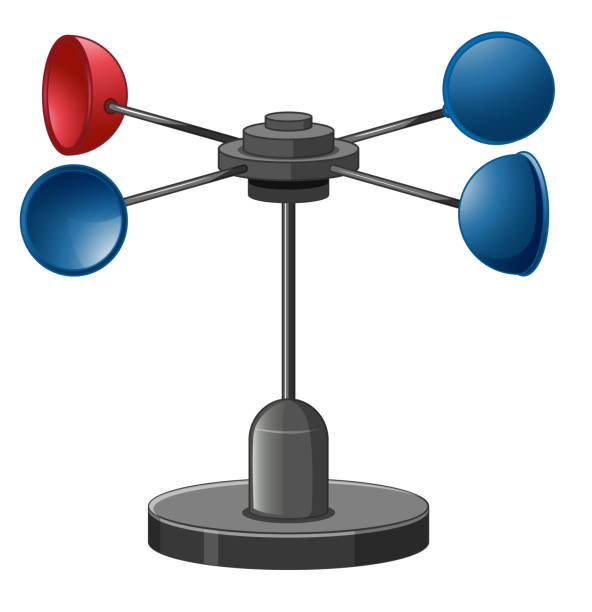Anemometer Innovations: The Latest Modern Technology for Wind Rate Measurement
Anemometer Innovations: The Latest Modern Technology for Wind Rate Measurement
Blog Article
All You Need to Find Out About Anemometers: How They Work, Why They Matter, and Where to Use Them
Anemometers, though usually ignored in the world of clinical instruments, play a crucial function in numerous fields, using valuable understandings right into wind rate and air flow patterns. Recognizing the auto mechanics behind these gadgets is vital for any individual seeking to harness the power of this data. From meteorologists tracking weather patterns to designers making structures with wind loads in mind, the applications of anemometers are varied and far-ranging. As we explore the details of anemometer innovation, we will uncover the internal functions of these tools, their importance, and the vital factors to consider when choosing the right anemometer for particular applications.

Anemometer Essentials
An important tool made use of to measure wind speed and direction, the anemometer plays an important function in weather forecasting and numerous sectors. An anemometer typically consists of three or 4 mugs that rotate in the wind, a vane that directs into the wind, and sensing units to track the activities or turnings.
There are different kinds of anemometers readily available, consisting of cup anemometers, vane anemometers, hot-wire anemometers, and sonic anemometers, each with its unique functions and applications. Mug anemometers are generally utilized for basic wind speed measurements, while vane anemometers are liked for directional measurements. Hot-wire anemometers appropriate for reduced airspeeds, and sonic anemometers are suitable for high-precision measurements in research and commercial settings. Recognizing the basics of anemometers is essential for accurate wind data collection and evaluation throughout different markets.
Principles of Anemometer Operation
Structure on the fundamental understanding of anemometer fundamentals, the concepts of anemometer operation clarify the auto mechanics behind wind speed and direction measurements. Cup anemometers, for instance, have 3 or even more cups that catch the wind, triggering them to rotate much faster as the wind speed rises. Hot-wire anemometers count on a heated cord that cools down as wind passes over it, with the price of cooling determining the wind speed.
Relevance of Anemometers
The significance of anemometers in meteorology and numerous industries can not be overstated. Anemometers play a crucial role in determining wind speed and instructions, giving vital data for climate forecasting, climate research studies, environmental surveillance, and aeronautics operations. Meteorologists rely upon anemometers to gather accurate wind data, helping them comprehend weather condition patterns, predict tornados, and concern timely cautions to the public. In markets such as construction, farming, eco-friendly energy, and maritime procedures, anemometers are utilized to optimize processes, make certain safety, and increase performance. Wind farm operators use anemometers to assess wind problems and optimize electrical power manufacturing from wind generators. In the maritime sector, anemometers aid ship navigating by offering real-time wind information to captains, helping them make notified decisions to guarantee secure voyages. In general, anemometers are important devices that add dramatically to security, efficiency, and notified decision-making in weather forecasting and a vast array of sectors.
Applications Throughout Various Industries
In the renewable energy sector, anemometers play a crucial duty in examining wind conditions for wind farm placements, guaranteeing optimal energy production. Industries like building and mining use anemometers to keep track click here for more of wind speeds, important like this for security protocols, especially when working at heights or in open-pit mines where strong winds can present risks. In farming, anemometers assist farmers in taking care of crop spraying by supplying real-time data on wind speed to prevent drift.

Picking the Right Anemometer for Your Needs
Picking the ideal anemometer customized to your certain needs is essential for getting accurate wind speed and direction measurements. When picking an anemometer, think about aspects such as the desired application, called for measurement variety, ecological conditions, and desired attributes. For general objectives, a cup anemometer is ideal for determining wind rate, while a vane anemometer offers wind direction data. Hot-wire anemometers are optimal for low airspeed dimensions, and ultrasonic anemometers supply high precision and longevity.

Conclusion
Finally, anemometers play a vital duty in gauging wind rate and direction across various markets. Recognizing the concepts of anemometer operation is important for choosing the appropriate gadget for particular demands. From weather forecasting to aviation, anemometers are important tools for guaranteeing and collecting precise data safety and security in different applications. It is crucial to think about the significance of anemometers in order to make enlightened decisions when picking one of the most ideal tool for measuring wind conditions.
There are numerous kinds of anemometers available, consisting of mug anemometers, vane anemometers, hot-wire anemometers, and sonic anemometers, each with its special features and applications. Cup anemometers are frequently used for standard wind speed measurements, while vane anemometers are preferred for directional dimensions. Hot-wire anemometers are ideal for low airspeeds, and sonic anemometers are suitable for high-precision measurements in study and commercial settings.Structure on the fundamental understanding of anemometer essentials, the concepts of anemometer operation illuminate the technicians behind wind rate and direction dimensions. For basic objectives, a cup anemometer is ideal for determining wind rate, while a vane anemometer offers wind direction data.
Report this page